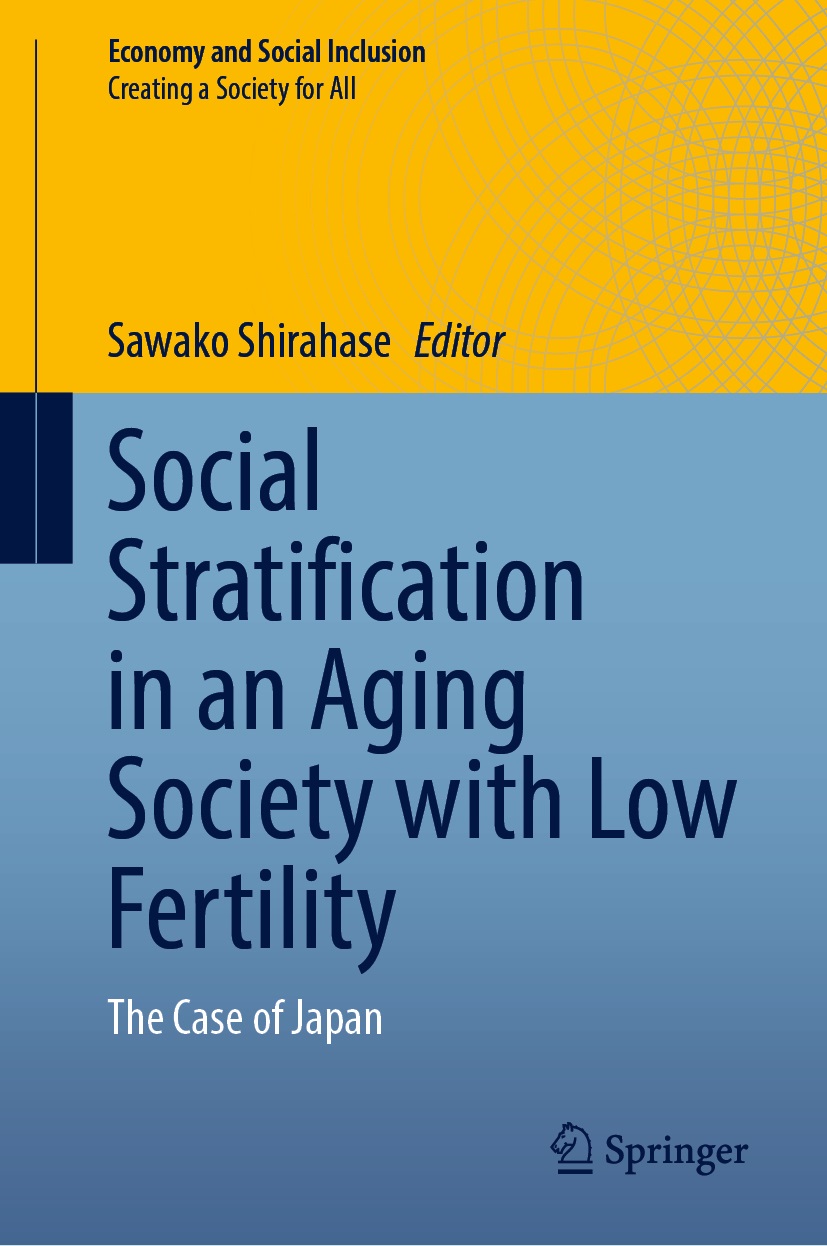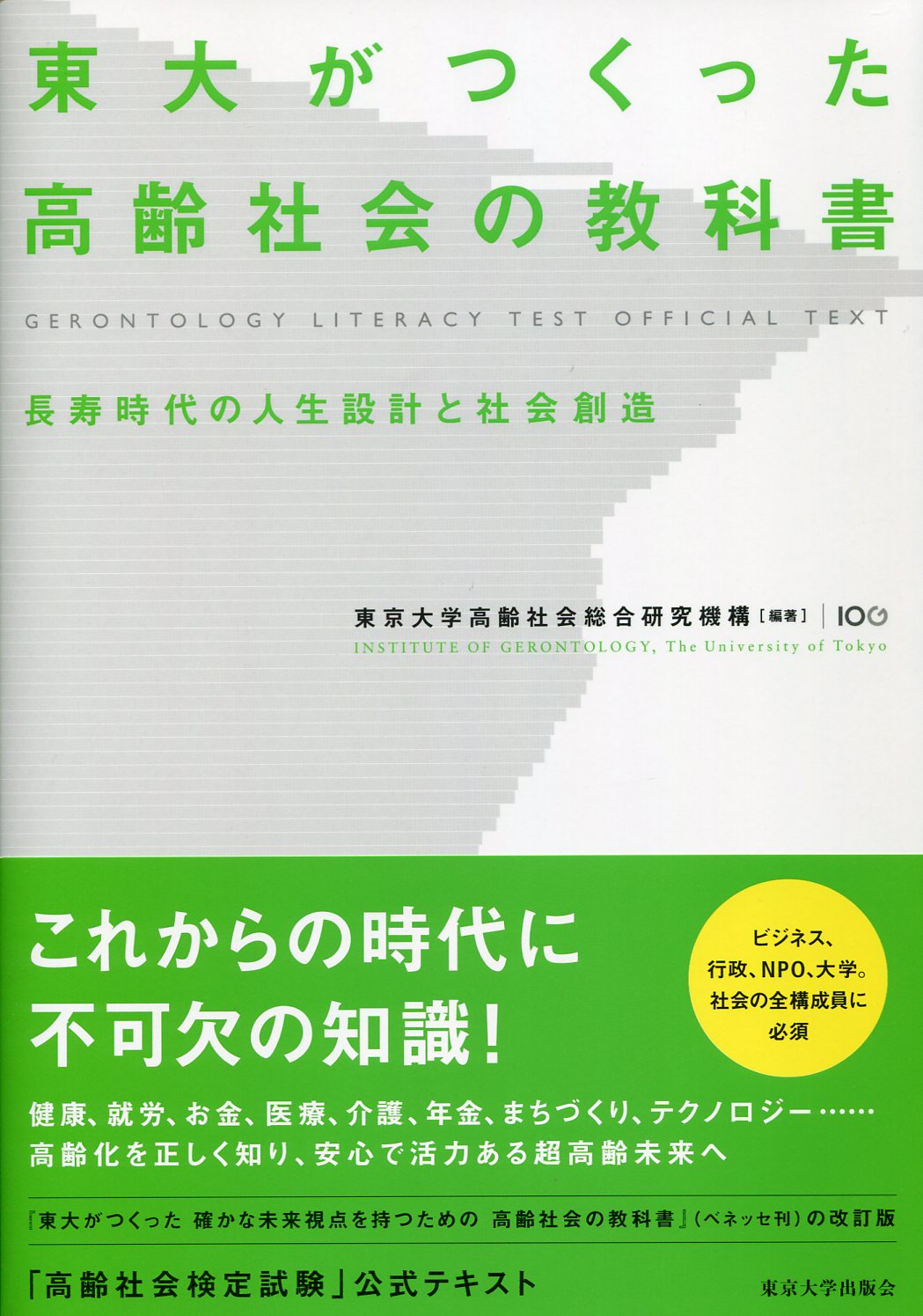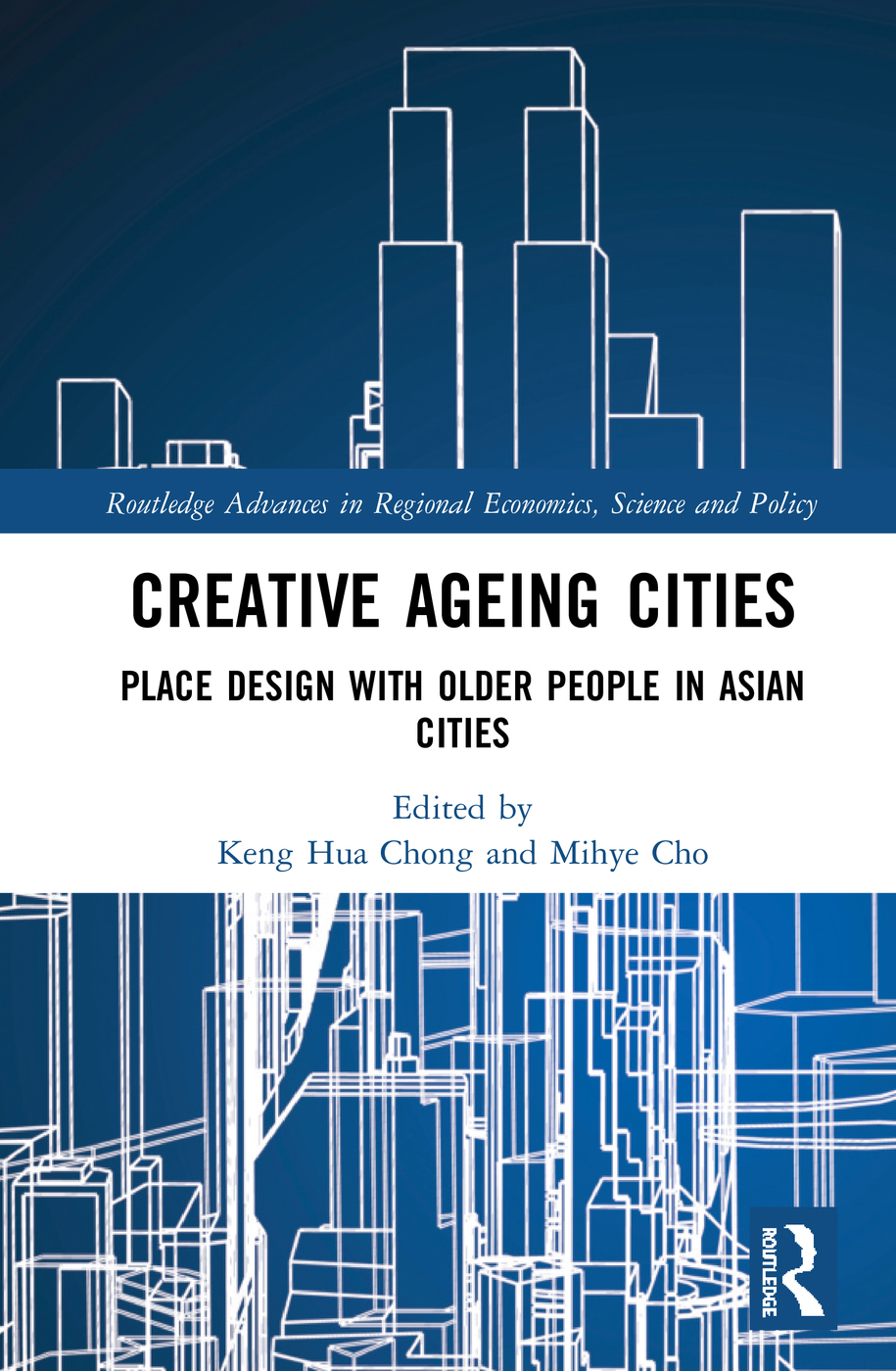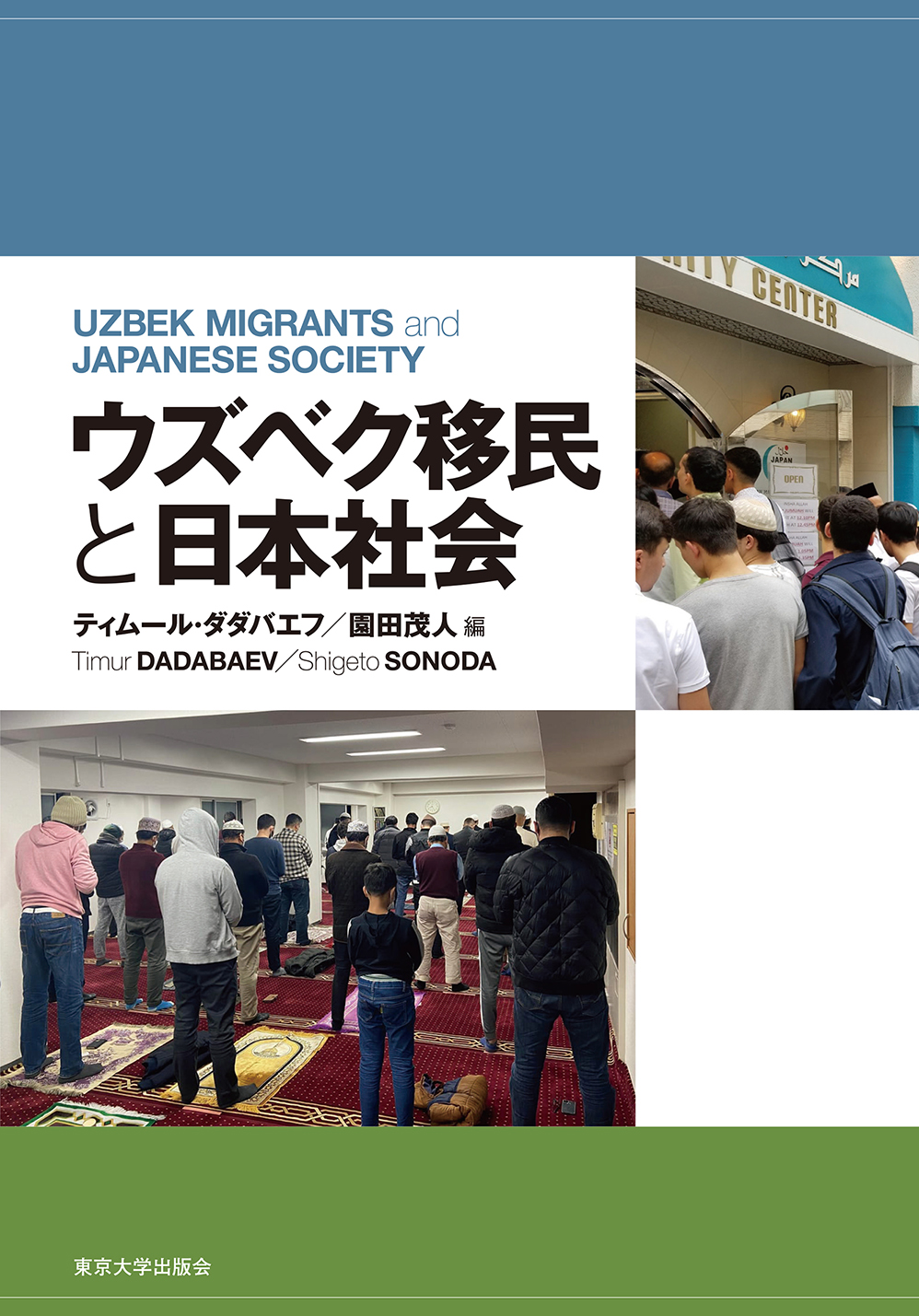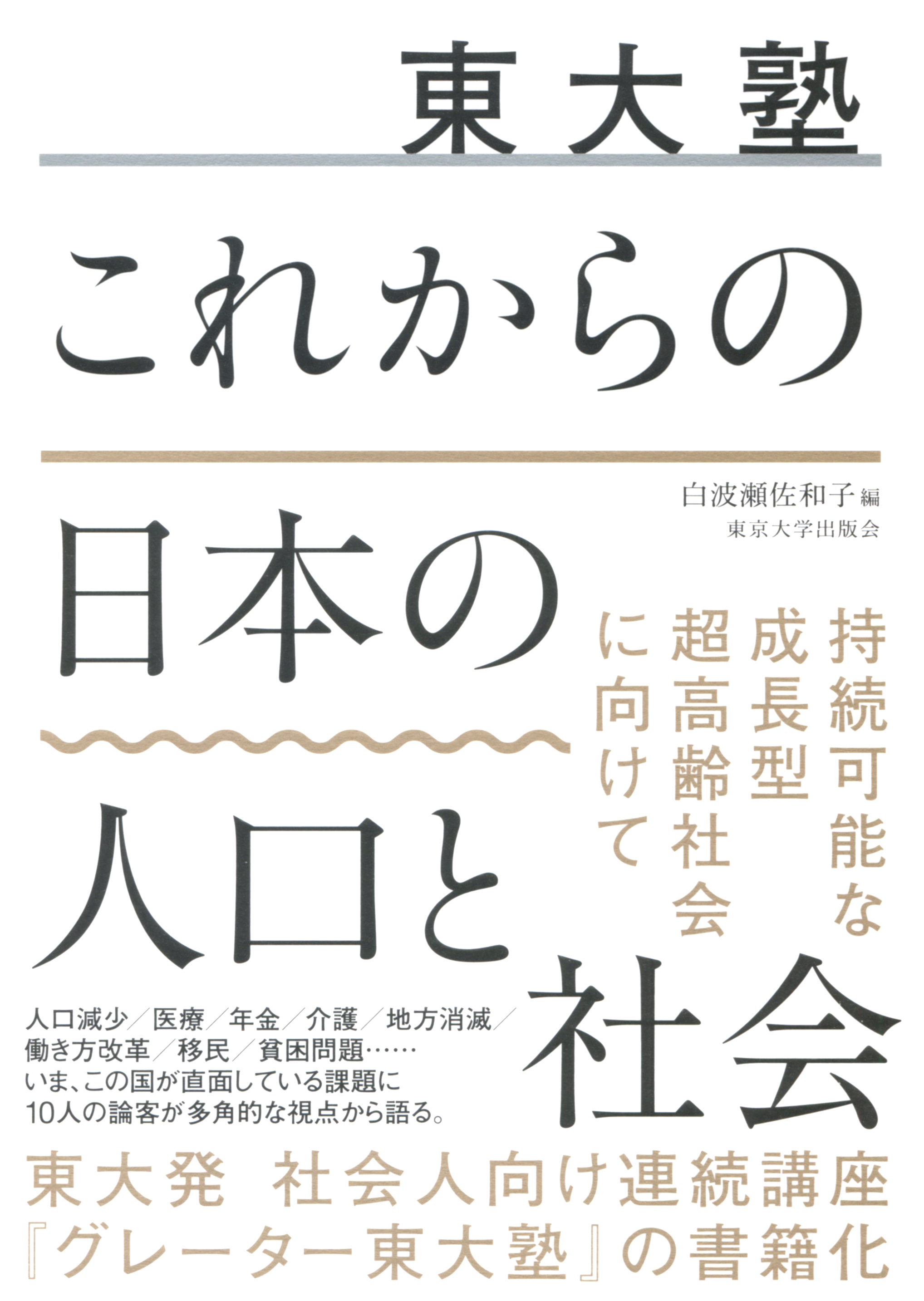
Title
Todai Juku Korekara no Nihon no Jinko to Shakai (Demography and Society: Looking for the Future in Japan)
Size
304 pages, A5 format
Language
Japanese
Released
January 25, 2019
ISBN
978-4-13-053027-9
Published by
University of Tokyo Press
Book Info
See Book Availability at Library
Japanese Page
Todai Juku: Demography and Society—Looking for the Future in Japan is based on a Greater UTokyo Seminar series of ten lectures on aging Japanese society from September to November, 2017. What first came to mind when organizing this series, was that we would like to discuss issues related to super-aging from a somewhat new perspective, thinking positively about the future to some extent. Aging issues have been discussed within a negative framework such as labor shortages, depopulation, decline in societal activity, or generational conflict between old and young people. In Japan, the total fertility rate began to fall below the replacement rate in the mid-1970s, population aging began accelerating in the mid-80s, and the Japanese population started declining in absolute terms since 2008. Now, Japan is a super-aged society, with 28.4% of the population 65-years old or older (Statistical Topics No. 121, Statistics Bureau, Ministry of Internal Affairs and Communications (http://www.stat.go.jp/data/topics/topi1210.html)). More than half of all household heads are 65 years old or older. Thus, as total fertility rate has remained below the replacement rate, the consequence is that the population size will inevitably shrink, even with increased longevity, unless there are population inflows from foreign countries. Rather than interpreting this situation in a purely pessimistic manner, might it not be possible to transform the risks into chances to change the game, to make our super-aged society innovative and develop for the future? What kind of model can Japan present for a future society? These questions formed the core when organizing this seminar.
In this book, there are three main pillars in discussing the aging society of Japan: scale, system, and arena. Broadly speaking, population can be examined from the perspectives of scale and the age structure. Quantitative changes such as declining birthrate and aging are closely related to changes in the age structure (the younger population shrinking and the older population expanding), and as a result, the population size is decreasing. When examining demography from a social perspective, themes such as depopulation, labor shortages, and inflows of foreigners are discussed quantitatively. The population size shrinks as a result of the progress of aging in a population. Such changes in population size are also connected to variations in the needs of the society according to transformation of the age structure and of the distribution of life stages of the people making up the population. Various social systems, such as social security systems, employment systems, and education systems, are associated with the different kind of social support services depending on their stage of life. However, the serious problems in corresponding to the changes in the needs structure of the people comprising our current society are partly derived from drastic changes to the basic assumptions embedded into various systems. One sees differences from the past in terms of when people get married, how many children they have, and how they take care of their old parents (such as whether or not they co-reside). We are not quite ready to welcome super-aged society in terms of the reality of changing social norms and values which have been the bases of various institutions and individual decision making.
This book is composed of the following ten lectures:
Lecture 1: History and Population—Population Decline from the Perspective of Historical Demography (Hiroshi Kitō)
Lecture 2: Population Migration—Population Issues in Urban and Rural Areas (Yasuhiro Satoh)
Lecture 3: Regional Revitalization—Population Decline and Regional Revitalization (Hiroya Masuda)
Lecture 4: Hope—Population Decline and Labor Issues (Yuji Genda)
Lecture 5: Ways of Working—Considering Ways of Working in a Society with Population Decline (Machiko Osawa)
Lecture 6: Supporting the Youth—How to Support Young People in a Society with Population Decline (Kei Kudo)
Lecture 7: Migration Policy—Migration Policy in a Society with Population Decline and the Future of Japan (Chieko Kamibayashi)
Chapter 8: Social Security—Social Security Systems in a Super-aged Society (Hiroshi Yoshikawa)
Lecture 9: Healthcare—The Development of Home Healthcare and Remote Healthcare in Japan and Singapore (Shinsuke Muto)
Lecture 10: Demography and Society—Looking for the Future in Japan (Sawako Shirahase)
The common message throughout the book is that the primary actors in a super-aged society will always be the people, their creativity to think for themselves and innovate, and the technological innovation accompanying their action. These are the keys for realizing the growth in a growth-model super-aged society. The country, regions, and individuals honing their own creativity and planning capabilities, rather than slowly reacting to instructions from others, and pro-actively participating in the construction of a growth-model for a super-aged society will provide a forward-looking road for progress. All generations can participate in various ways to make out society sustainable, depending on their circumstances; it will be by skillfully incorporating diversity as positive differences in its systems, and encouraging paradigm shifts in social norms, that societies with declining populations will save themselves.
(Written by SHIRAHASE Sawako, Professor, Graduate School of Humanities and Sociology / 2019)



 Find a book
Find a book


 eBook
eBook